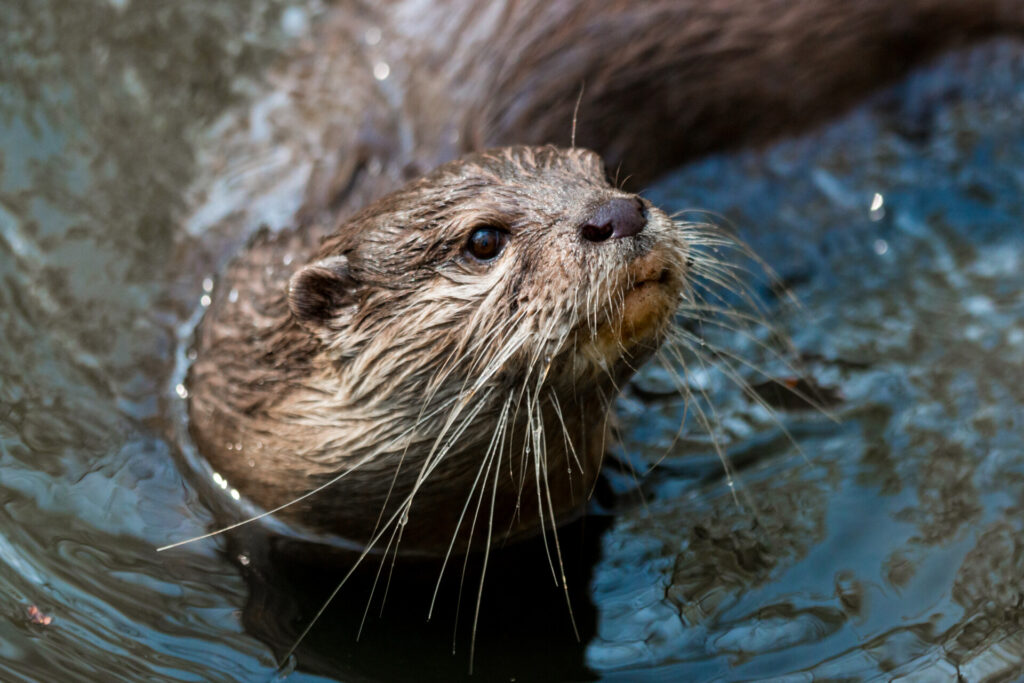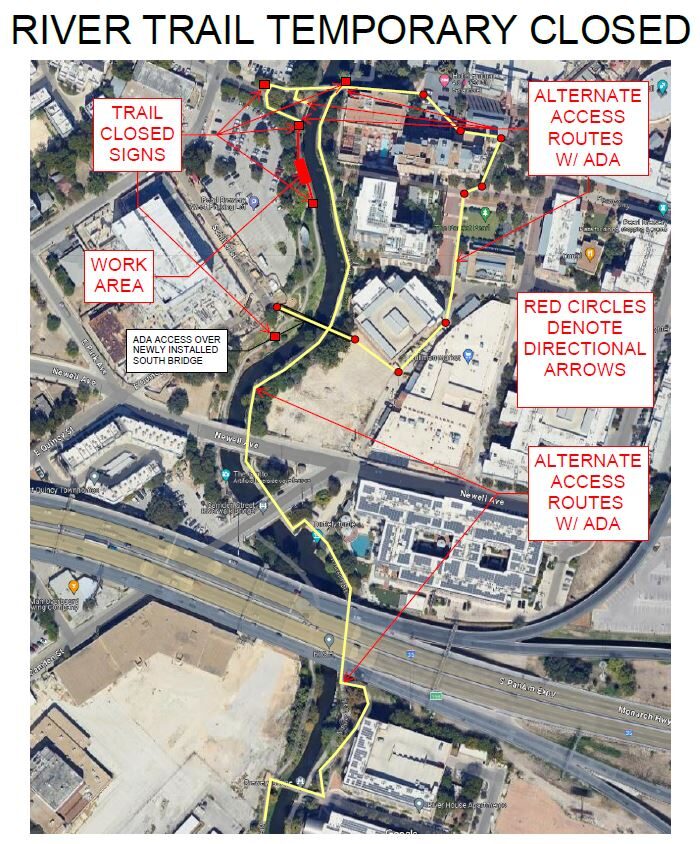Imagine that you’re strolling along the San Antonio River in Goliad. Out of the corner of your eye, you catch sight of a flash of sleek fur sliding down the opposite riverbank and cutting through the water. What could it be? It’s quite possible that you narrowly missed seeing a North American River Otter (Lontra canadensis).
This South Texas native is a sleek, playful mammal found throughout the waterways of North America, from Alaska to the Gulf of Mexico. With its streamlined body, dense fur, and muscular tail, the river otter is well-adapted for swimming, using its webbed feet to chase fish, crayfish, and frogs. Known for their social and curious nature, river otters often engage in playful behaviors, like sliding down muddy banks. According to mammal biologists, otters play a crucial role in their ecosystems as an indicator species, a species whose presence, absence, or abundance in an environment serves as a sign of the overall health or condition of that ecosystem. Otters fulfill this role by controlling prey populations and enhancing biodiversity.
Where are they found in Texas?
River otters, known for their playful behavior and agility in water, are a common sight in East Texas’s lakes and streams. However, their historical range in Texas was much more extensive. These semiaquatic mammals once inhabited areas stretching from the eastern Panhandle, through the central Edwards Plateau, and down to the Rio Grande Valley in South Texas—including the San Antonio River Basin. According to Craig Hensley, a biologist with the Texas Parks and Wildlife Department (TPWD), river otters were historically found in Bexar County down through the Goliad area. Extensive hunting and trapping during the early American fur trade, as well as water pollution and habitat loss, led to declines in otter populations in the late 19th and early 20th centuries, completely eradicating them from certain areas. However, due to conservation efforts as well as the creation of reservoirs by both humans and beavers in recent years, river otters have been documented expanding westward to their native habitats as far as the Abilene area. Due to this expansion, they have also been removed from TPWD’s Species of Greatest Conservation Need list.
In an exciting chapter in the river otter’s conservation story, Texas State University announced this spring that there have been four sightings of the river otter in the San Marcos River. This was the first time in 70 years that they have been documented in that area, leading folks to share visions of visitors’ tubing alongside these playful creatures. Otters may be moving back into the San Antonio River Watershed as well. Last year, a river otter was spotted in the San Antonio River in Goliad by Goliad State Park Superintendent Jared Ramirez. Check out the picture below: can you spot the otter?
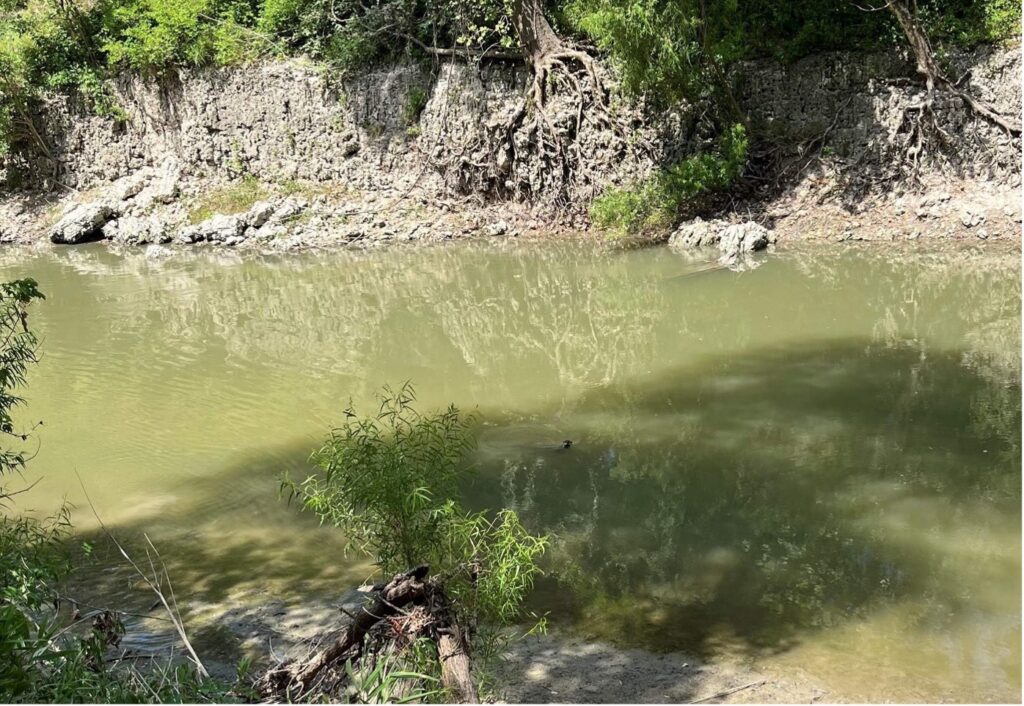
“I would encourage people to keep their eyes open for them in the San Antonio area over the next few years and report sightings to iNaturalist.” said Craig. However, catching a glimpse of one is challenging due to their elusive and shy nature. Where have the most recent sightings in our area been? Check out the iNaturalist website for information on recent river otter sightings in Texas.
Nutria: An Invasive Look-Alike
As you’re keeping an eye out for river otters, it’s important to know more about an invasive species they can often be mistaken for—the nutria (Myocastor coypus). The nutria, also known as the coypu, is an invasive rodent native to South America. Originally brought to the United States starting in 1899 to be grown and harvested for the fur trade, many nutria breeders released them in the 1940s when the fur trade bottomed out and others simply escaped captivity. Thanks to a high reproductive rate when left to their own devices, nutria quickly became abundant throughout the Gulf states and up the west coast. Nutria are occasionally misidentified as river otters, however, the two are in different taxonomic orders. As a member of Order Carnivora, otters are similar to badgers, minks, weasels, and wolverines. Nutria are rodents and closely related to beavers and muskrats. Nutria are found throughout Texas, including the San Antonio River. According to the River Authority’s Watershed and Park Operations Manager Tommy Mitchell, nutria have historically been found along the Mission Reach, Eagleland, and King William areas of the river. “We do have a program in place for trapping and removal of nutria similar to the feral hog program. The amount of nutria seen seems to have declined over the years, we hope due to the removal program. The primary concern with nutria is the impact they have on aquatic vegetation and the riverbank from burrowing, which causes the area to fail and erode the channel.”
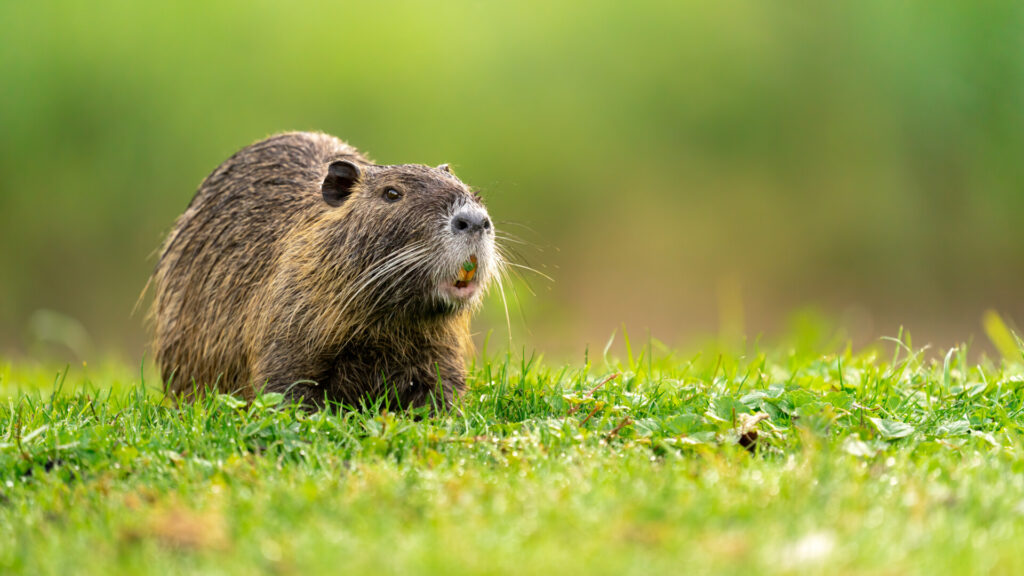
Caption: Nutria (pictured above) can sometimes be mistaken for river otters.
Helping the River Otter
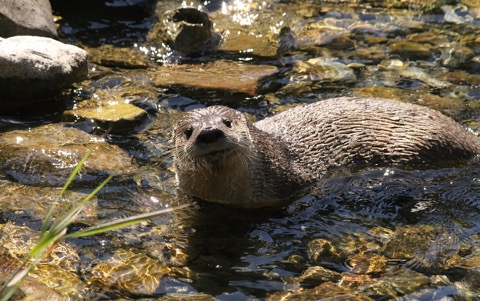
Can you imagine seeing river otters in the upper San Antonio River in the future? Here are some steps to take to make sure we keep our local waterways and aquatic habitats otter friendly.
- Don’t let litter trash your river. Otters feed on fish, so it is important to ensure the fish lives in waterways free of chemicals and heavy metals to avoid the species getting mercury poisoning.
- Leash your dog. Otters prefer to sleep in bushes and tall grasses near waterways, so make sure fido is leashed so they don’t attack a sleeping otter.
- Use existing river-access points. This helps to preserve otter habitat and prevent erosion.
Together, we can take care of this otterly fascinating south Texas native species and help to create a healthy watershed they can thrive in!

